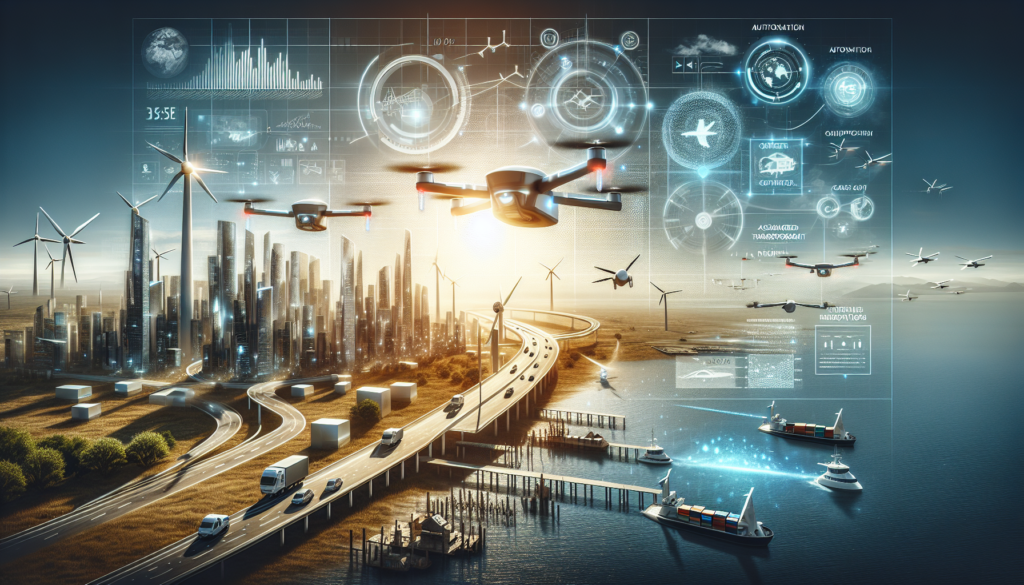Modern avionics stands at the threshold of a radical transformation, with unmanned aerial vehicles (UAVs), more commonly known as drones, emerging as one of the most disruptive innovations of recent decades. Transcending their initial use in the military realm, drones are expanding their reach into the civilian sphere, promising to reshape the air transport sector in several essential dimensions: logistics, urban mobility, and surveillance.
Technical Evolution of Drones
Advancement in microelectronics, robotics, and artificial intelligence have been pivotal for the development of drones. Modern flight control systems are a compilation of sophistication, including gyroscopic stabilization, advanced GPS, and autonomous navigation algorithms that can adapt to varying environments and atmospheric conditions.
As for energy, fuel cells and lithium-polymer batteries are increasing drones’ autonomy, while electric propulsion systems reduce their acoustic footprint and polluting emissions.
Civil and Commercial Applications
In the commercial domain, drones have introduced new possibilities in logistics. “Last-mile” parcel delivery is at a crucial stage of experimentation, with e-commerce giants like Amazon and logistics companies like UPS implementing pilot programs to assess viability at a real-world scale.
Moreover, urban mobility is taking a turn towards using drones for passenger transport. Prototypes like the EHang 216 are among the first to demonstrate the feasibility of autonomous air taxis, capable of short flights in densely populated urban environments.
Challenges in Safety and Regulation
The proliferation of drones entails the challenge of integrating into controlled airspace. Aviation safety regulations must adapt to these new actors and ensure their safe coexistence with manned aviation. Bodies such as the FAA in the United States and EASA in Europe are in the process of establishing regulatory regimes that include requirements for remote identification and anti-collision systems.
Recent Advances in Drone Technology
The development of High Altitude Long Endurance (HALE) unmanned aerial vehicles and heavy-lift drones signal a diversification in the capabilities of these devices. These advancements significantly broaden their potential applications, from environmental surveillance missions to the transport of larger volume goods.
Comparison with Past Initiatives
Marking a distinction from early prototypes, current drones incorporate artificial intelligence systems that facilitate autonomous decision-making, comparable in complexity to traditional aircraft pilot assistance systems.
This has led not only to incremental improvements in drone operation but a complete reevaluation of how these vehicles can be used for services previously not considered, such as monitoring critical infrastructure and rapid response in emergency situations.
Case Study: Integration of Drones in Logistics
An illustrative case study is the project of autonomous drone delivery by Wing, an Alphabet subsidiary. In regions of Australia and in Virginia, USA, Wing has deployed an operational fleet of drones that perform deliveries directly and autonomously from local stores to customers, with notable reductions in time and operational costs.
Prospects and Future Challenges
Looking toward the future, there is an anticipated growing incorporation of advanced artificial intelligence into drone flight management software, improving their ability to navigate complex environments and conduct safer and more efficient operations. Furthermore, advances in material technology could lead to lighter yet robust and energy-efficient vehicles.
Conclusion
With constant innovation, drones are destined to become an integral component of the air transport of the future. As technical, regulatory, and safety challenges are overcome, drones will broaden their horizons, offering new transport solutions that will be quicker, safer, and more environmentally friendly. The global community must therefore prepare for the significant changes that these versatile unmanned aerial vehicles will bring about.

